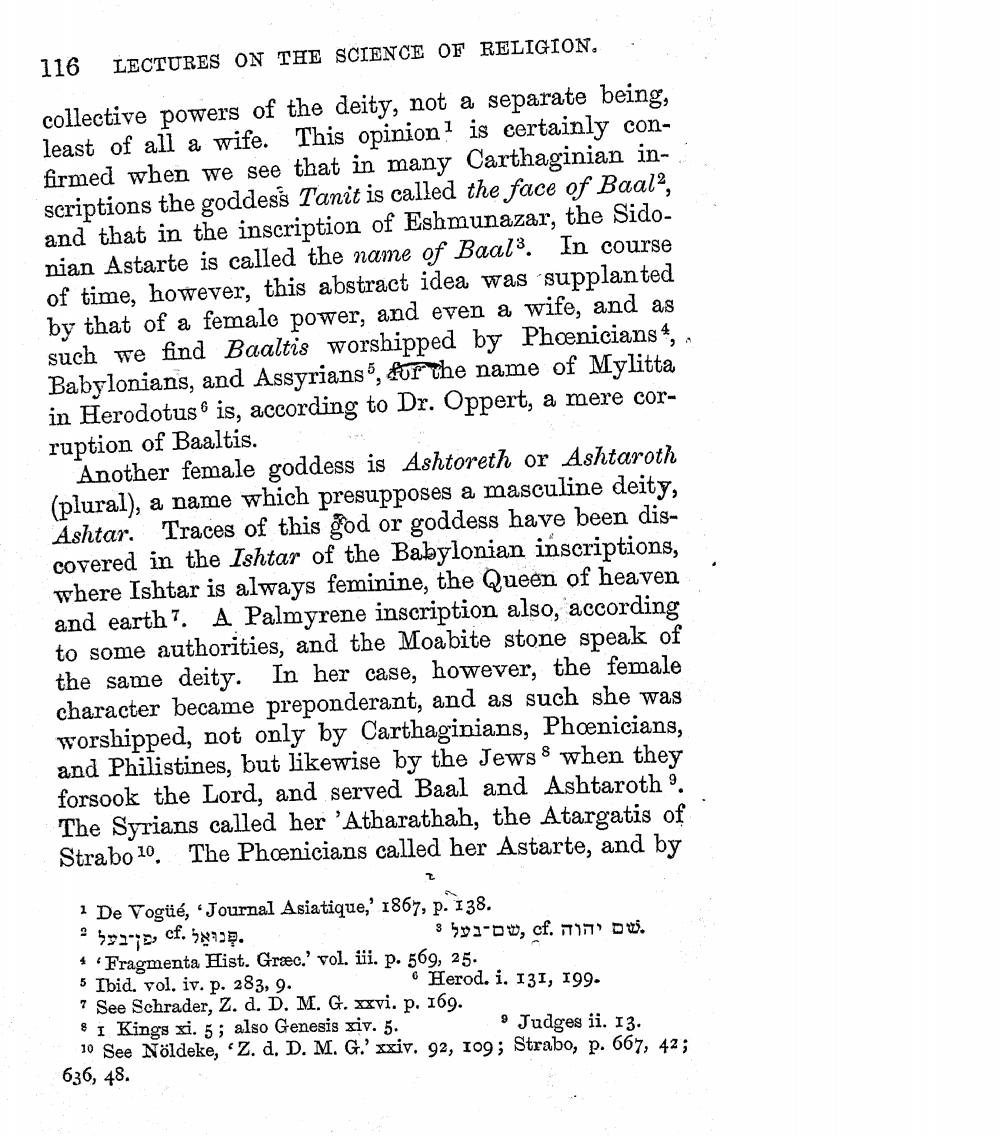________________
116 LECTURES ON THE SCIENCE OF RELIGION.. collective powers of the deity, not a separate being, least of all a wife. This opinion is certainly confirmed when we see that in many Carthaginian inscriptions the goddess Tanit is called the face of Baala, and that in the inscription of Eshmunazar, the Sido. nian Astarte is called the name of Baal3. In course of time, however, this abstract idea was supplanted by that of a female power, and even a wife, and as such we find Baaltis worshipped by Phoenicians 4, . Babylonians, and Assyrians, for the name of Mylitta in Herodotus is, according to Dr. Oppert, a mere corruption of Baaltis.
Another female goddess is Ashtoreth or Ashtaroth (plural), a name which presupposes a masculine deity, Ashtar. Traces of this god or goddess have been discovered in the Ishtar of the Babylonian inscriptions, where Ishtar is always feminine, the Queen of heaven and earth. A Palmyrene inscription also, according to some authorities, and the Moabite stone speak of the same deity. In her case, however, the female character became preponderant, and as such she was worshipped, not only by Carthaginians, Phoenicians, and Philistines, but likewise by the Jews & when they forsook the Lord, and served Baal and Ashtaroth 3. The Syrians called her 'Atharathah, the Atargatis of Strabo 10. The Phoenicians called her Astarte, and by
1 De Vogüé, Journal Asiatique,' 1867, p. 138. : 592-72, cf. .
3592-00, cf. 17479 D 4 Fragmenta Hist. Græc.' vol. iii. p. 569, 25. 5 Ibid. vol. iv. p. 283, 9.
Herod. i. 131, 199. 7 See Schrader, Z. d. D. M. G. xxvi. p. 169. 81 Kings xi. 5; also Genesis xiv. 5.
9 Judges ii. 13. 10 See Nöldeke, Z. d. D. M. G.' xxiv. 92, 109; Strabo, p. 667, 42; 636, 48.




